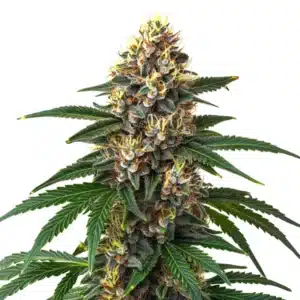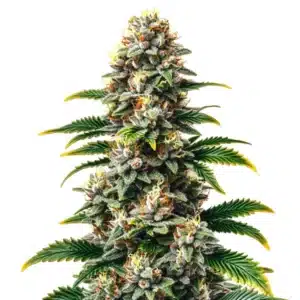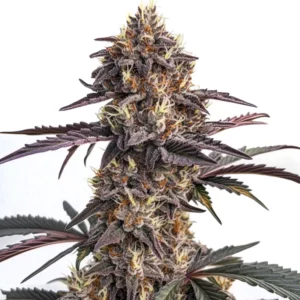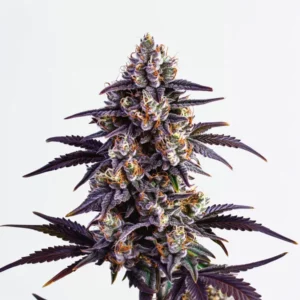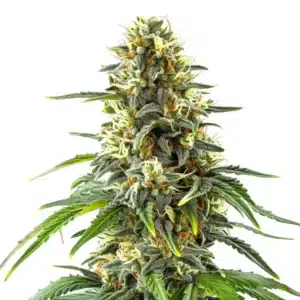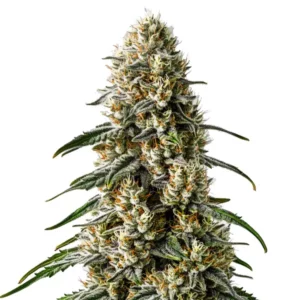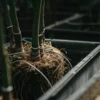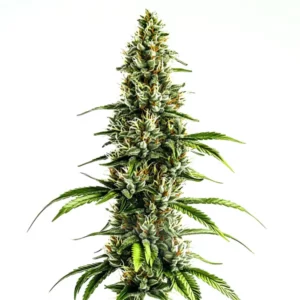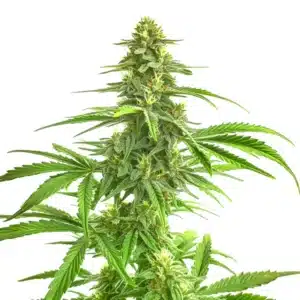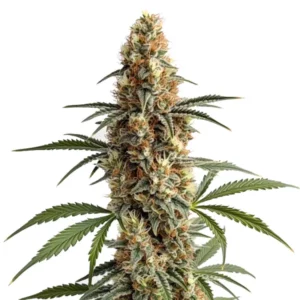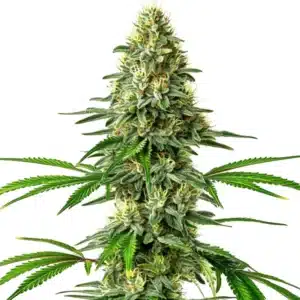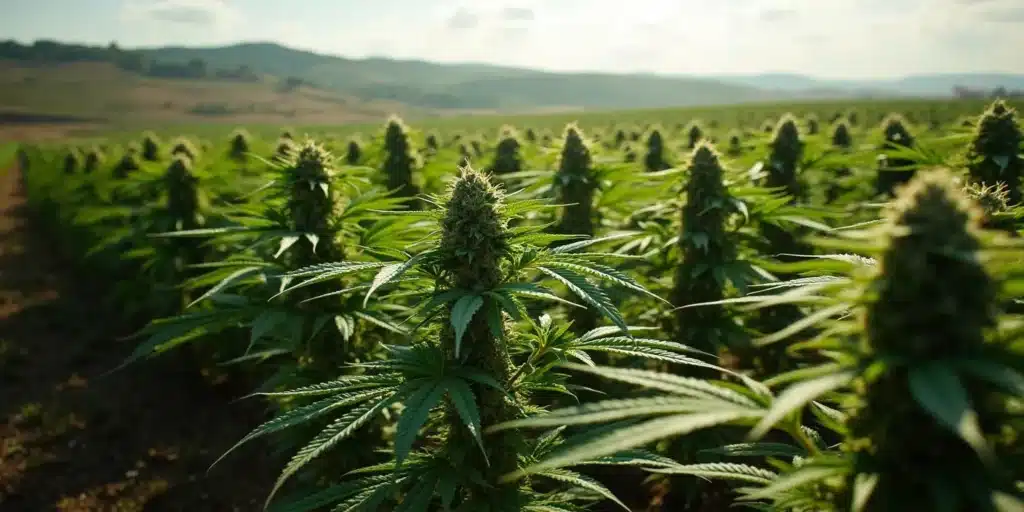
Wind Burn Cannabis Plants: What You Need to Know
Cannabis growers, both novice and experienced, are often faced with a common problem – wind burn. Wind burn on cannabis plants can cause damage that could affect the overall growth and yield of the plant. Recognizing and managing wind burn damage in cannabis cultivation are essential skills for every grower.
Wind burn is not just an outdoor problem, even indoor growers can experience it due to poor ventilation or excessively powerful fans. So, let’s delve into the world of wind burn, its effects on cannabis growth, and how to prevent it.
Recommended Strains
Candy Kush
|
|
THC | 14% - 19% (Medium) |
|
|
Type | Feminized |
|
|
Yield | Medium |
|
|
Phenotype | 60% Indica / 40% Sativa |
Candy Kush Regular
|
|
THC | 18% - 22% (Medium) |
|
|
Type | Regular |
|
|
Yield | Medium |
|
|
Phenotype | 65% Indica / 35% Sativa |
Before we proceed, it’s worth mentioning that some cannabis strains are more resilient to wind burn than others. For instance, strains such as the OG Kush, Chocolopez, and Wombat from Blimburn Seeds are known for their hardiness against challenging growing conditions.
These strains, thanks to their innate resistance, can endure the harsh conditions better, thus minimizing the impact of wind burn on cannabis plants. But it’s crucial to remember that even the most resistant strains can suffer from wind burn under extreme conditions, thus it’s essential to understand the signs of wind burn and take necessary preventive measures.
Recognizing Wind Burn on Cannabis Plants
Spotting wind burn on your cannabis plants early on is the first step in ensuring the health and productivity of your crop. Often, the symptoms of wind burn might appear similar to other plant stressors, making it a bit tricky to diagnose.
Typically, wind-burned cannabis plants exhibit signs such as curling or clawing leaves, with the tips pointing upwards. The leaves may appear dry, brittle, and yellowish, mimicking the symptoms of nutrient burn. Distinguishing between nutrient burn and wind burn can be challenging, but remember, wind burn usually affects the side of the plant facing the wind or fan.
Recognizing wind burn on cannabis plants early can significantly minimize the damage. The quicker you identify the signs and symptoms, the faster you can take corrective measures. Regular inspection and monitoring of your plants for any abnormal changes can go a long way in maintaining their overall health and productivity.
Remember, knowledge is power. By being aware of the signs of wind burn, you can act promptly and prevent severe damage. This not only ensures the health of your plants but also safeguards your yield and investment.
Promos & Deals
Effects of Wind Burn on Cannabis Growth
The effects of wind burn on cannabis growth can be detrimental if not addressed promptly. Excess wind stress can lead to reduced transpiration, the process through which plants absorb water and nutrients. This can result in stunted growth, reduced yield, and in severe cases, plant death.
Think of a gentle breeze as a form of ‘exercise’ for your plants, strengthening their stems. However, this exercise increases their transpiration rate, meaning they need more water to stay hydrated. If the wind is too strong and you don’t increase watering accordingly, the leaves can’t keep up with the moisture loss. They begin to dry out, burn, and eventually, the entire plant can suffer.
Also, wind burn can make your cannabis plants more susceptible to diseases and pests. Plants stressed by wind burn have weakened defenses, making them an easy target for harmful pathogens and insects.
The effects of wind burn on cannabis growth are multi-faceted. It not only impacts the plant’s physical health but also its metabolic processes. When a plant is wind-burned, it struggles to perform essential functions like photosynthesis and nutrient absorption, impacting overall growth and yield.
Furthermore, wind burn weakens the plant’s immune system, making it vulnerable to diseases and pests. A stressed plant has lower resistance, and it becomes easier for pests and diseases to invade and cause further damage. Therefore, understanding the effects of wind burn on cannabis growth is a crucial part of effective crop management.

How to Prevent Wind Burn on Cannabis Plants
Prevention is always better than cure, especially when dealing with wind burn on cannabis plants. An important preventive measure is to ensure proper ventilation for indoor plants. While fans are necessary to replicate natural wind and strengthen the plant stems, excessive fan speed can cause wind burn. So, adjust your fans to a gentle breeze, not a gale force wind.
A crucial consideration is the plant’s age. Young seedlings and clones are extremely delicate and can dry out very quickly. For this reason, it is best to keep oscillating fans off and set your extraction system to the minimum during the first few weeks. Wait until your plants have developed at least four sets of true leaves or are around 50 cm tall before introducing gentle ventilation. Until then, the minimal air exchange from the extractor is sufficient.
For outdoor plants, consider using windbreaks such as fences, hedges, or netting to shield your plants from strong winds. If you’re growing in pots, moving the plants to a more sheltered location can also help.
Another effective strategy for indoor grows is to not run your fans and extractors continuously. By using a timer, you can alternate their operation. For example, during the flowering stage, you could set your oscillating fans to run for one hour and then turn off for the next, reducing constant exposure while still ensuring adequate air movement.
Learning how to prevent wind burn on cannabis plants is a crucial skill for any cannabis grower. It’s all about providing the right growing environment. Too much wind can be harmful, but too little can also lead to other issues like mold and mildew. Therefore, striking the right balance is key.
For indoor growers, consider investing in a fan speed controller to regulate the air flow and prevent wind burn. For outdoor growers, selecting a sheltered location or using windbreaks can significantly reduce the risk of wind burn. Remember, prevention is the first line of defense against wind burn on cannabis plants.
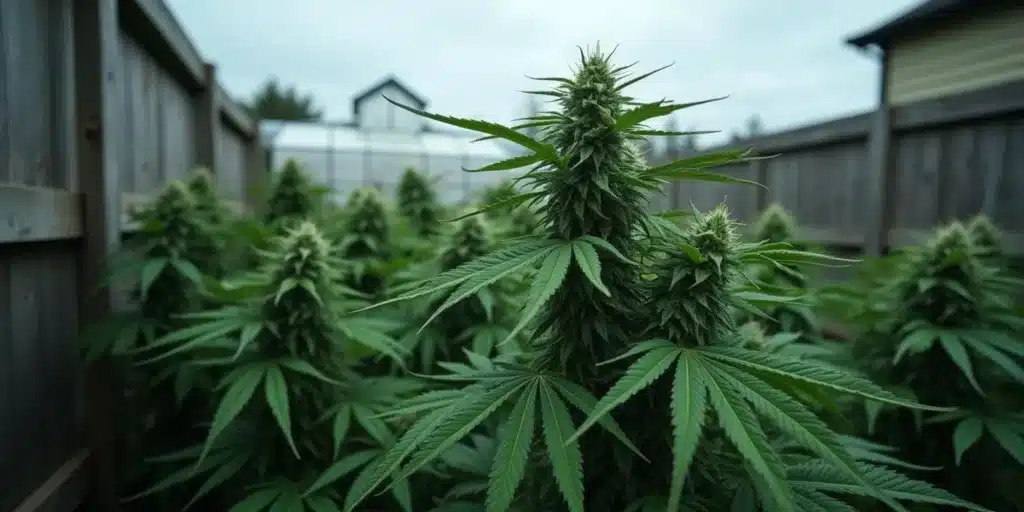
Treatment for Wind-Burned Cannabis Plants
Despite your best efforts, if your cannabis plants do suffer from wind burn, don’t panic. There are several treatment options available. Start by addressing the root cause – reduce the wind exposure. For indoor plants, this could mean repositioning your fans or reducing their speed. Outdoor plants may need to be relocated or shielded with a windbreak.
One of the best ways to help a plant recover is through foliar feeding. Applying a light mist of water mixed with a recovery aid, such as Alg-A-Mic or another specialized foliar nutrient, can provide direct relief. It is absolutely critical to do this only when the grow lights are about to turn off or just before they turn on. Spraying with the lights on can cause water droplets to act like magnifying glasses, leading to light burn on the delicate leaves.
Next, ensure your plants are receiving adequate water and nutrients. While you don’t want to overwater or overfeed your plants, keeping them well-nourished can help them recover from stress faster. You can also consider adding a high-quality organic compost or a commercial plant recovery product to aid in the recovery process.
Treatment for wind-burned cannabis plants involves both immediate and long-term care. After reducing the wind exposure, focus on supporting plant recovery through proper nutrition. This includes ensuring a balanced diet of essential nutrients and maintaining optimal water levels. Overwatering can lead to root rot, while underwatering can further stress the plant. So, it’s important to strike a balance.
For severe cases, you might want to consider using plant recovery products. These products are designed to help plants recover from stress and damage, promoting faster healing and growth. However, it’s important to use these products as per the instructions to avoid causing further damage.
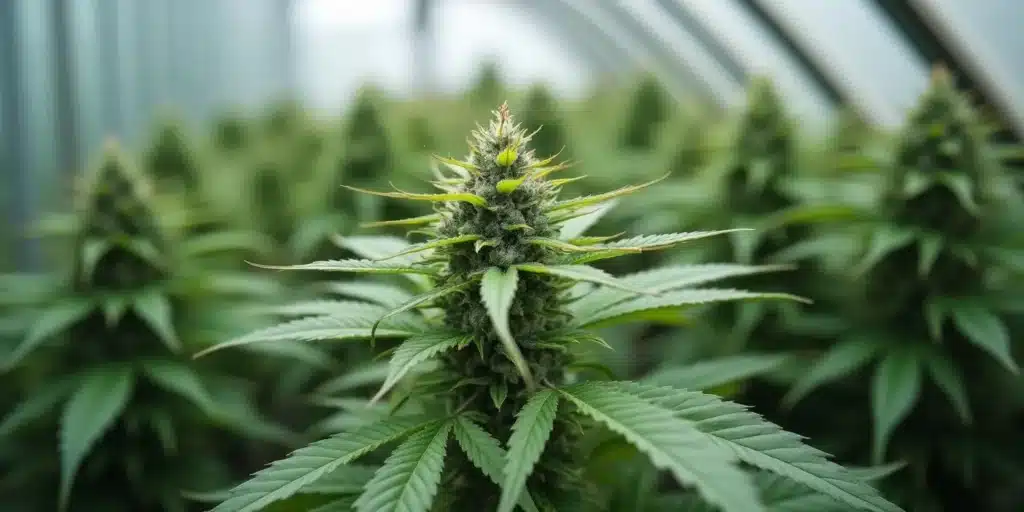
Managing Wind Burn Damage in Cannabis Cultivation
Managing wind burn damage in cannabis cultivation involves a combination of preventive measures, early detection, and effective treatment. Regularly inspect your plants for signs of wind burn and take immediate action if you spot any symptoms.
While some damage may be unavoidable, especially in outdoor grows, implementing the right strategies can minimize the impact on your crop’s yield and quality. Remember, it’s all about creating the best growing conditions for your cannabis plants.
Managing wind burn damage in cannabis cultivation is a continuous process. It begins with selecting the right strain and continues through to the cultivation and harvesting stages. It involves constant monitoring, timely intervention, and appropriate treatment measures.
Moreover, managing wind burn is not just about addressing the immediate problem. It’s about creating a sustainable growing environment that reduces the risk of wind burn in the first place. This involves proper plant placement, appropriate fan use, and the use of windbreaks for outdoor plants.
FAQs
Can wind burn kill cannabis plants?
While a mild case of wind burn may not kill your cannabis plants, severe or prolonged exposure to excessive wind can cause significant damage that could potentially lead to plant death. Therefore, it’s important to prevent and treat wind burn as soon as possible.
Wind burn can not only cause physical damage to the plant structure but also stress the plant, leading to reduced nutrient uptake, stunted growth, and increased susceptibility to diseases and pests.
Yes, severe cases of wind burn can potentially kill cannabis plants. The stress caused by wind burn can overwhelm the plant, leading to a decline in its health and ultimately, death. This is why it’s crucial to monitor your plants regularly and take action at the first sign of wind burn.
However, keep in mind that most plants can recover from mild to moderate wind burn with the right care. The key is to act quickly and provide the necessary treatment to help your plants recover.
How can I differentiate between wind burn and nutrient burn?
Wind burn and nutrient burn can exhibit similar symptoms on your cannabis plants, making it difficult to differentiate between the two. However, a key distinguishing feature is that wind burn usually affects the side of the plant facing the wind or fan, while nutrient burn tends to affect the entire plant.
Also, nutrient burn often appears on the tips of the leaves, progressing inwards, whereas wind burn causes the entire leaf to curl or claw, with leaves appearing dry and brittle.
While both wind burn and nutrient burn can cause similar damage to your cannabis plants, understanding the subtle differences can help in accurate diagnosis and treatment. For instance, nutrient burn generally starts at the tips of the leaves and progresses towards the base. On the other hand, wind burn usually affects the entire leaf and is more prevalent on the side facing the wind or fan.
Additionally, nutrient burn can be rectified by adjusting your feeding regimen, while wind burn requires changes in the grow environment, such as reducing wind speed or using a windbreak. Accurate diagnosis is the first step towards effective treatment for wind-burned cannabis plants.
Are some cannabis strains more resistant to wind burn than others?
Yes, certain cannabis strains are more resilient to wind burn than others. These hardy strains typically have a robust structure and strong root system that can withstand wind stress better. For instance, strains like OG Kush, Chocolopez, and Wombat from Blimburn Seeds are known for their resilience against challenging growing conditions including wind burn.
Choosing the right strain, especially for outdoor grows, can greatly help in managing wind burn damage in cannabis cultivation.
Indeed, certain cannabis strains are naturally more resilient to wind burn. These strains have evolved to withstand harsh growing conditions, making them a good choice for growers in areas with high wind speeds. However, it’s important to remember that even these robust strains require proper care and attention to thrive.
While choosing a wind-resistant strain can certainly help, it’s not a guarantee against wind burn. Other factors such as the plant’s overall health, growing conditions, and care regimen also play a significant role in determining its resistance to wind burn. Therefore, while choosing a suitable strain is important, it’s just one part of the overall strategy for managing wind burn damage in cannabis cultivation.
What role does proper ventilation play in preventing wind burn for indoor cannabis plants?
Proper ventilation is crucial in preventing wind burn for indoor cannabis plants. While fans are used to replicate natural wind and strengthen the plant stems, excessive fan speed can cause wind burn. Therefore, indoor growers should ensure their fans are adjusted to create a gentle breeze, not a gale force wind.
Also, the positioning of the fans matters. Fans should be set to move air around the plants, not directly at them, to avoid causing wind burn.
Proper ventilation is key in maintaining the health and wellbeing of indoor cannabis plants. It helps in regulating temperature and humidity levels, reducing the risk of mold and pests, and improving the overall air quality. However, when not managed correctly, it can lead to wind burn.
Therefore, it’s crucial for indoor growers to understand the importance of ventilation and how to optimize it to prevent wind burn. This includes knowing where to place the fans, how to adjust their speed, and how to create a gentle airflow that benefits the plants without causing wind burn.
Can wind-burned cannabis plants recover?
Yes, wind-burned cannabis plants can recover, provided they receive the right care and treatment. Start by reducing the wind exposure. For indoor plants, this could mean adjusting the fans or their positioning. Outdoor plants may need to be relocated or shielded with a windbreak.
Next, ensure your plants are well-nourished with adequate water and nutrients. Adding a high-quality organic compost or a commercial plant recovery product can also aid in the recovery process. Remember, recovery takes time. So, give your plants the care they need and be patient.
Recovery from wind burn is certainly possible, but it requires patience and proper care. The damaged plants need time to heal and recover, and during this period, they should be provided with optimal growing conditions. This includes maintaining the right temperature and humidity levels, providing adequate light, and ensuring a balanced nutrient supply.
During the recovery phase, it’s also important to continue monitoring your plants for any signs of further stress or damage. Remember, a plant recovering from wind burn is still vulnerable and can easily be affected by other stressors. Therefore, it’s crucial to provide your plants with a stable and stress-free environment to support their recovery.


